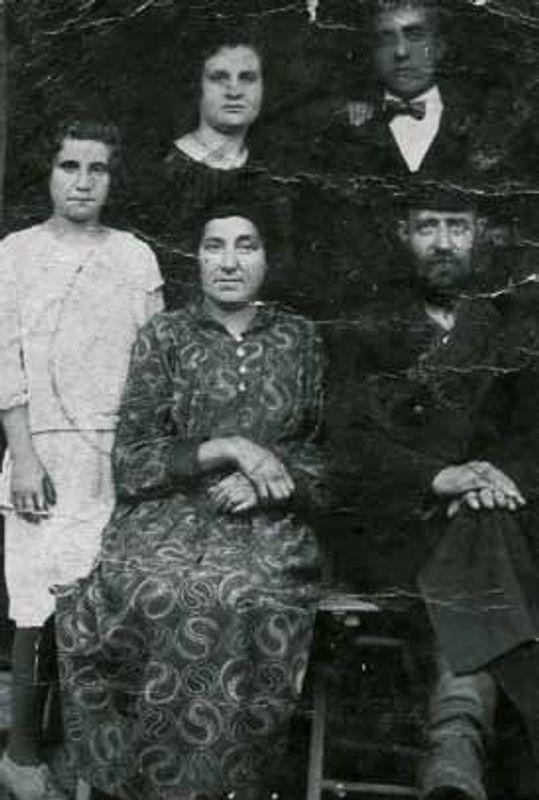The origins of Laszczow date back to the mid-16th century.In 1549. Aleksander Łaszcz of Tuczap - the chamberlain of Bełsk and starosta of Horodło - received from King Sigismund Augustus a privilege to locate (under the Magdeburg Law) a town named Pravda in place of the village of Domaniż. In 1578. The city received the name of Łaszczów.Since the end of the 16th century. By the 1730s.Laszczow was a significant center of the Reformation - an Arian church and a printing house operated here. Thanks to, among other things. Privileges to hold fairs and markets granted in 1603. by King Sigismund III, the city's economic situation was good, but frequent fires, war damage by Chmielnicki's Cossacks (1648) and Swedish troops (1702) did not favor its development. In 1745. On the initiative of the owner of the estate, Jozef Laszcz, the construction of a church and a Jesuit college began.In 1754. The city burned down again.In 1843. Jan Szeptycki became the owner of the estate.In 1869. Łaszczów lost its municipal rights.In 1914., during the Battle of Komarov, there was bloody fighting between Russians and Austrians near Laszczow. In 1915. After the occupation of Laszczow, the Austrians ran a narrow-gauge railroad line through the settlement, leading from Uhnow to Wlodzimierz Wolynski.In 1916. A Polish primary school was established here. Between the wars, Laszczow was inhabited by Catholics, Orthodox Christians and numerous Jews. In June 1944. The settlement was burned down by units of the Ukrainian Insurgent Army (UPA). As a result of warfare, the buildings of Laszczow were 90% destroyed.On January 1, 2010. Laszczow regained its municipal rights.Jews in Laszczow - Until 1918. - Jewish settlers probably appeared in Łaszczów in the first half of the 17th century. There is also a hypothesis that they were already living here when the city was founded, i.e. in 1549. In 1629. There were two in the city, in 1643. while - three houses inhabited by Jewish families.The Jews were most likely slaughtered by Khmelnytsky's Cossacks (1648). In the second half of this century, the local community revived, and probably no later than the mid-18th century. An independent municipality was established. The community, which was not very numerous and rather poor, was granted privileges by the then owners of the city.The oldest surviving reference to a synagogue, located at the northern corner of the market square, dates from 1750. It was probably also then that a cemetery was established west of the market.In the mid-18th century. About 600 Jews lived here.They lived mainly near the market.They were engaged in crafts (carpentry, tailoring, and kamashtie) and grain trade. In 1754, Franciszek Salezy Potocki gave permission to Wulf Dawidowicz to erect brick stalls.In 1782. Jews were given permission to purchase a square with the remains of the Laszczow castle (destroyed in 1702 by the Swedes) between the ramparts, and to build a synagogue and other community facilities there. During the November Uprising (1830-1831), Jewish physician Alfons Brawstedt established a hospital for wounded insurgents at his own expense.In the second half of the 19th century. Jews made up the majority of the settlement's residents.Interwar period - In September 1920. there was a pogrom of Jews in the town, after which some Jewish residents left Laszczow. At the time, the settlement had a main synagogue, two communal beit ha-midrash (one near the synagogue, the other near the market), a cemetery, a mikveh and a ritual slaughterhouse. Charitable organizations were active, including. Bikur Cholim Society for Nursing the Sick and Linas ha-Cedek.Jews lived around the market, where there were also workshops and stores. Before 1939. Only eight houses belonged to non-Jewish owners.Holocaust - After the outbreak of war, many Jewish residents of Laszczow fled to the Soviet Union.In 1940, the Germans formed a Judenrat here, consisting of twelve people. May 17, 1942. shot some of the local Jews on the spot, and deported the rest (on May 27) to the Belzec death camp or the Sobibor death camp. During the deportation, several dozen people managed to escape to a nearby forest.Some of them were caught and shot in the fall of 1942.Only a few Jews from Laszczow survived the occupation. The Germans devastated facilities belonging to the community.
1. Łaszczów - Centrum miejscowości
Stories
Laszczow - center of the village
Jewish History Tours

Powered by Clio Muse Tours
Powered by Clio Muse Tours
